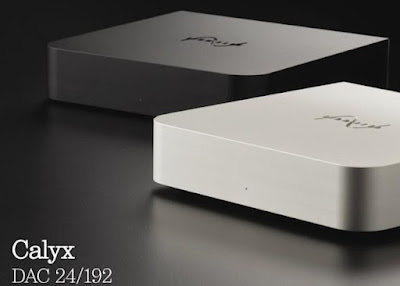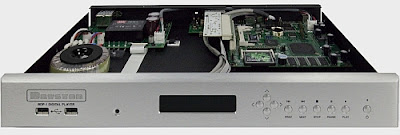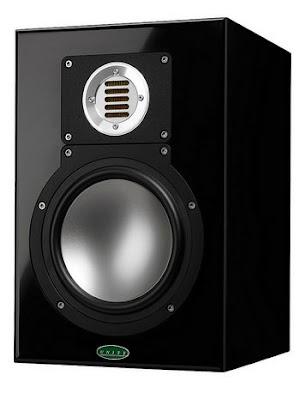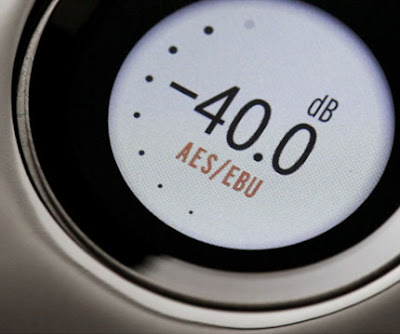If you want to stream digital audio files on your computer to your stereo hi-fi set, you have quite a number of options. Here are some of them.
Apple Airport Express
A small 802.11n hub/base station that plugs direct into your wall socket. Not only it is able to create and connects up to 10 users and share a USB printer over wifi, it allows you to stream iTunes over wifi from your computer (the toggle on the lower right hand corner in your iTunes window selects computer or the AE), the Airport Express is then connects to your stereo system over an analog mini output, or a digital mini-toslink output.
- Small, easy to set up
- Works only with iTunes's "Airplay" protocol
- Convertible mini jack analog/digital toslink output
- Support AIFF, WAV, ALAC, MP3, and WMA files
- Only compatible with 16-bit/44.1kHz and 48kHz files
- $US99
The Airport Express works very well. The analog output sounds surprisingly good considering the diminutive size (putting switching power supply together with DAC and everything else is certainly not a good thing). if you use normal cable, the toslink output requires an mini-toslink adapter, and it plugs into the same hole as the analog mini output. My quibble is that having a toslink multiplexer in the digital audio stream is jitter-prone and would like to see a coaxial RCA digital output. However, since electrical isolation may be a challenge given its small form factor, Apple's engineer may have chosen toslink which is electronically isolated. Now if you want a better case and power supply...
The WM-10 is basically a souped-up Airport Express but they call it "Airstream". It has basically the same specs and functions except the aluminum case (black or silver) and better power supply (R-core transformers rather than switching PSU). Although it uses the Cirrus Logic 4344 24-bit/192hKz DAC (same with the AE), the streaming is limited to 16-bit 44.1/48kHz files due to Airplay limitations. Another limitations is that no matter what file you choose to play, the WM-10 will convert to Apple Lossless (ALAC) on the fly (same as the AE). Although Micromega is a great french digital company with experience in this field, I still do not see the point of spending $1,595 vs Airport Express' $99.
Micromega also makes an integrated amplifier with Airstream built-in, the AS400. Denon and Marantz are coming out with their own version of Airplay compatible network streamers. Watch this space.
Linn of UK went all out and announced that they will no longer produce CD players and will only market digital streamers, or "DS" in Linn lingo. Linn DS players music stored on a hard-disk or Network Attached Storage through RJ-45 Ethernet (Linn doesn't believe in Wifi). There are 3 models, from expensive to super expensive:
- Majik DS - Plays FLAC, WAV, MP3, AIFF with resolution up to 24/192kHz, Ethernet input, on-board digital volume control. No digital output. There's also an integrated control+amp model called Majik DS-i
- Akurate DS (above) - adds WMA, OGG and AAC support. Adds balanced XLR analog audio and digital (BNC S/PDIF) output. Linn Dynamik switch mode power supply.
- Klimax DS (below) - pretty much the same guts as the Akurate but with better chassis, power supply and analog output stage.
Logitech Squeezebox Touch
For those who do not want to be stuck with everything iTunes and the constrictive 16-bit. The Touch is the latest incarnation of the successful Squeezebox series. It is a great product and will play any file format you throw at it up to 24/96 resolution. It is compatible with both Windows and Mac, iTunes and others. You need to install a small host program called Squeezebox Server in your host computer and the squeezebox will find the music library automatically when connected to the same wifi network. The touch screen works well and easy to read. There was never a single drop-out over the 3 months I used it. Software on the unit may not be as robust and as user friendly as the Apple-designed ones, but it works as advertised.
- 4.3" touch color screen
- Wifi 802.11N, or Ethernet connection
- AKM4420 DAC chip (one of the best "mid-fi" chip there is)
- USB host port for external USB drives - can be hacked to make it work with USB DACs
- SD card slot
- Play virtually all formats
- Built-in internet radio capabilities
- Abilities to add custom "apps"
- Coaxial and toslink digital output
- 24-bit/96kHz compatible
- US$299
You can control the Touch using it touchscreen interface, its included small black remote control, or the excellent iPeng app for iPhone and iPad.
The Touch sounds good. Very easy on the ears and on the soft side and has a laid-back presentation, it is quite good out of the box with little or no break-in. However we audiophiles are never satisfied. After searches on the internet, I found out that there are modification services specifically for the Touch available from specialist companies like Audiocom and Bolder cables.
I went for the Audiocom Level-2 digital upgrade (GBP277), sending the unit to UK where they install Bybee slipstream purifier for DC input and replaces circuits with low noise wide band regulators, OS-CONs everywhere and replaces the coaxial digital output circuit with silver wiring plus a nice NextGen digital output jack from WBT.
I also purchased the Teddy Pardo's TTouch Power Supply (EUR270) which replaces the 5v switch mode wall wart with the superiorly low-noise power supply featuring the propreitary SuperTeddyRegulator.
Sonic improvements after the upgrade are apparent. The sound is now cleaner, more articulate and refined. However, I am using it to feed an external DAC that I am familiar with. Let me tell you this, as a transport, It beats all the disc-based transports I own and it is definitely better than running toslink direct out of the Mac mini. Perhaps Wifi protocol just re-arranges the bits and eliminates jitter. May be the power supply is so clean that the background becomes blacker than black. The Audiocom modded Squeezebox Touch with Teddy Pardo PSU is the absolute best sounding transport I have ever own.
































